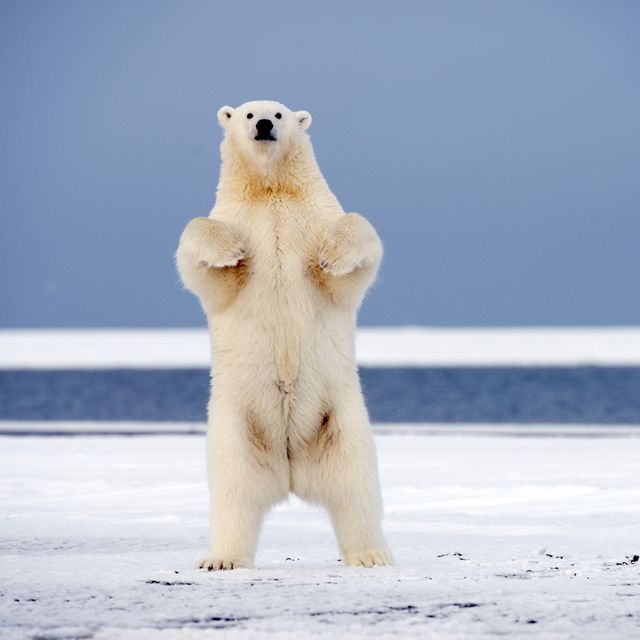Since we are beginning our week on Animal Planet, let's take a look at some Intended Consequences—or, more accurately, We-Don't-Give-A-Green-One-If-The-Planet-Burns Consequences. From The Washington Post:
Novaya Zemlya is a Russian archipelago stretching into the Arctic Ocean. It once played host to Soviet nuclear tests, including the largest-ever man-made explosion, when the so-called King of Bombs detonated in 1961, releasing 50 megatons of power and deepening an arms race that threatened to turn the Cold War hot. Today, the barren landscape is under siege — from dozens of polar bears locked in their very own sort of hot war. Marine ecologists have long been sounding the alarm about the peril posed by global warming for the vulnerable species. In the far reaches of Russia, the situation has suddenly become traumatic for humans, too. Officials in the Arkhangelsk region, where the archipelago lies, on Saturday declared a state of emergency because of the marauding mammals.
Polar bears are typically born on land but live mostly on sea ice, where they hunt and feed on seals. But as arctic ice thins, which is linked to the acceleration of climate change, the animals move ashore, ravenous. They scavenge, sometimes coming into contact with human populations. At least 52 bears were massed near Belushya Guba, the main settlement on the island territory, which is still used as a military garrison, with restricted access to the public. The town had a population of about 2,000 as of the 2010 Census.
As it happens, I have been in close contact—or as close a contact as I care to be—with polar bears three times in my life: once, at a science center where I volunteered in high school, and twice in arctic Canada, where I'd gone to write about Jordin Tootoo, the first Inuit drafted in the NHL. (Aside: buy Jordin's book.) I went in a small motor boat with Jordin, his brother, and his father out into the Churchill River so Jordin and his brother could jump in and ride the beluga whales that flock into the river from Hudson Bay. About 30 yards away, we saw a head moving steadily toward the far bank of the river. Jordin's father steered the boat in that direction and we found ourselves circling—at a distance of about five feet—a fully grown polar bear, which kept swimming as if nothing unusual was happening.
As we circled it, the bear rolled onto its back and gave a loud sniff which, loosely translated from the original polar bear, meant, "OK, fall out of the boat, motherfckers." This I know—being prey at close range does wonderful things for your concentration. That night, I saw a mother bear and her cub wandering down the main street of the city past my hotel.
Polar bears are the apex of apex predators. They have absolutely no fear of human beings and have been known to track them for food, although these encounters are not as common as was once thought.
But, then, that was before we began to melt their habitat around them.
TASS reported that the animals had tried to enter office buildings and residential quarters, and that they had chased residents and engaged in other aggressive behavior. Photos and video footage posted over the weekend showed polar bears parading through drab living spaces, appearing on playgrounds, staring down dogs and feasting on garbage...Meanwhile, vehicle patrols and brigades of dogs appeared to make no difference. The mammals were undeterred, continuing to pose a “threat to the life and health” of residents, officials said. More drastic measures were required.
Invasive species are a particular damaging sideshow of the climate crisis. But this isn't exotic plants or aggressive fish finding new places to live. This is a 1,200-pound predatory carnivore that fears nothing on the planet, and now, because their natural living space is literally liquifying, they are starting to show up in, well, a swarm.
But, by all means, let's keep arguing about whether the Green New Deal is green, new, or a deal. We have plenty of time.
Respond to this post on the Esquire Politics Facebook page here.

Charles P Pierce is the author of four books, most recently Idiot America, and has been a working journalist since 1976. He lives near Boston and has three children.














